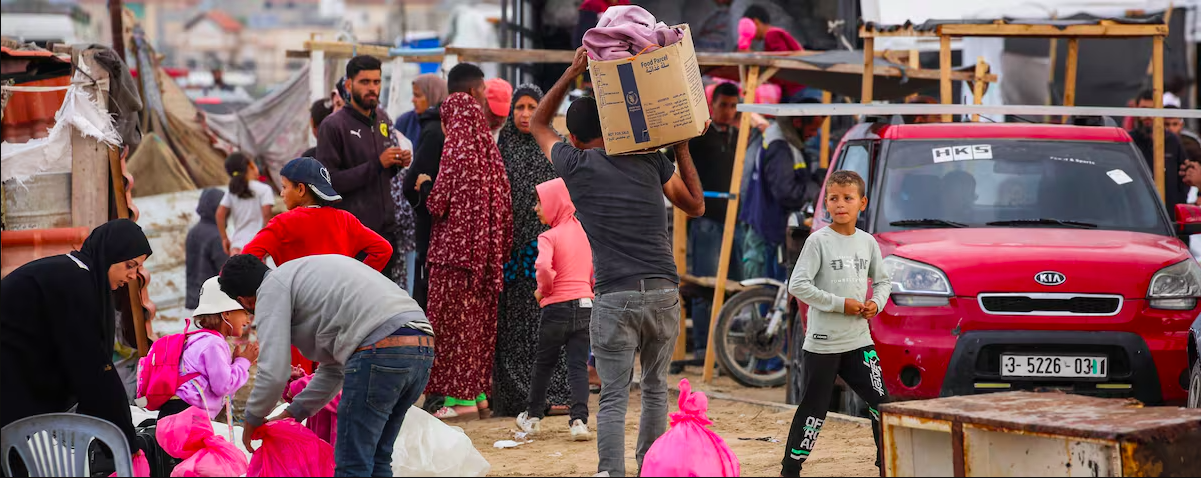
Published 13/05/2024 16:52
The Gaza Ministry of Health reported that the death toll from the war that broke out on October 7, 2023 has surpassed the harrowing mark of 35,000 people. Israeli forces have stepped up attacks on the Jabalia refugee camp in northern Gaza, while increasing pressure on Rafah in the south, amid ongoing conflict in the region. United Nations Secretary-General António Guterres renewed his call for an “immediate humanitarian ceasefire”, highlighting the urgency of the situation in Gaza.
Guterres, in a speech addressed to international donors in Kuwait, also called for the unconditional release of all captives held by Hamas and an immediate increase in humanitarian aid to Gaza. He emphasized that a ceasefire is only the first step towards reconstruction and stabilization of the devastated region.
Despite mediation efforts by several countries, including Egypt, Qatar and the United States, to reach a ceasefire, negotiations appeared to be stalled. US President Joe Biden expressed hope that a ceasefire could be reached quickly if the Palestinian resistance released hostages held in Gaza. However, the militant group viewed Biden’s statement as a setback in negotiations, accusing Israeli Prime Minister Benjamin Netanyahu of sabotaging peace efforts by launching the Rafah offensive.
Israeli strikes hit several areas of Gaza overnight, with Israel claiming to have hit more than 150 terrorist targets. The Gaza Health Ministry reported that at least 63 people had been killed in the past 24 hours, bringing the death toll from Israel’s bombing and offensive to more than 35,000, most of them women and children.
Women and children
According to official statistics, the period in which the most Palestinian bodies were recovered occurred during the months of November and December 2023. In these more than seven months of conflict, an average of 180 people were killed per day.
Children and women make up the overwhelming majority of those killed, with Save the Children saying more than 13,800 children were killed. UNICEF, the United Nations children’s fund, has estimated that at least 17,000 Palestinian children are currently unaccompanied or separated from their parents in Gaza. The Palestinian Red Crescent Society said this week that around 1,000 children in Gaza have lost one or both legs.
As the call for a ceasefire gains momentum, Israeli attacks continue to target densely populated areas in Gaza. Several points in Gaza were hit, with reports of dozens of deaths in Beit Lahiya, in the north, and Rafah, in the south. The Kamal Adwan Hospital in Beit Lahiya received at least 12 bodies after a “massive shelling” by Israel, according to the Palestinian news agency Wafa.
Israeli attacks have forced hundreds of thousands of refugees to flee, facing severe shortages of food and medical supplies in the refuge areas. Witnesses report that Israeli tanks are moving toward the Jabalia refugee camp, the largest of Gaza’s eight refugee camps, home to more than 100,000 people.
The humanitarian situation is increasingly desperate, with medical infrastructure overwhelmed and essential supplies lacking. Emergency doctor Imad Abu Zayda described the situation as dire, with medical facilities operating on minimal resources and a lack of oxygen for patients.
In Rafah, on the border with Egypt, the Kuwaiti hospital received the bodies of 18 people killed in Israeli attacks in the last 24 hours. UNRWA reported that around 300,000 people fled Rafah over the past week, decrying the “forced and inhumane displacement of Palestinians” in Gaza.
There is no safe place no ceasefire
Israel defied international opposition and sent tanks and soldiers east of Rafah, effectively closing a key aid crossing. Philippe Lazzarini, head of the UN agency for Palestinian refugees, UNRWA, condemned Israel’s evacuation orders, saying they were forcing Palestinians to flee to unsafe places.
Civilians in Rafah were told to head to the al-Mawasi “humanitarian zone” on the northwest coast, although aid groups warned the area was not prepared to receive large numbers of people. EU chief Charles Michel condemned the deployment of civilians to “insecure zones”, highlighting the urgency of protecting civilians amid conflict.
From the beginning of the conflict, the Israeli military ordered the Palestinians to “go south” as its ground forces invaded Gaza from the north. Since then, no one has been able to return to their homes in northern Gaza, as Israel established a military corridor that cuts the Strip in half.
Around 1.9 million people, or more than 80% of Gaza’s population, have been internally displaced. Most are sheltered in UN facilities such as schools and hospitals; however, more than 400 people were killed and at least 1,400 injured in these locations.
More than 1.5 million people are now crammed into Rafah, Gaza’s southernmost city on the border with Egypt. Many were forced to remain in makeshift camps or on the streets, exposed to Israeli airstrikes. Now, we see this continuous flow of 360,000 families fleeing Rafah aimlessly, while being shot at near the Egyptian border.
Source: vermelho.org.br

